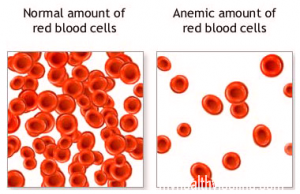Anemia diagnosis can be done with the help of performing blood test for anemia. Anemia is a body condition where it lacks red blood cells. The red blood cells supplies oxygen to the tissues of the body. Anemia diagnosis is done through blood testing.
Causes of Anemia
The main cause of anemia is in the activity involving the bone marrow. There are different parts of the body that are important in providing red blood cells but majority of the work is done solely by the bone marrow. Bone marrow is the soft tissue at the center of the bones that contributes to the making of red blood cells. The red blood cells’ life lasts between 90 to 120 days. When the cells die, these are removed from the blood. Erythropoietin, a hormone that is made in the kidneys, tells the bone marrow to produce red blood cells.
Hemoglobin is a familiar term, particularly for those that had their blood tested for CBC or complete blood count. The hemoglobin is a protein within the red blood cells that carries oxygen. It is also responsible for giving the color red to the red blood cells. Individuals who lack hemoglobin in their blood cells have anemia. There are numerous causes of anemia and the most common are:
• Chronic illnesses such as rheumatoid arthritis, ulcerative colitis or cancer
• Kidney failure
• Certain medications
• Pregnancy
• Poor diet
• Problems related to the bone marrow like multiple myeloma, leukemia or lymphoma
• Immune system problems which cause ruin to the red blood cells like hemolytic anemia
• Blood loss from numerous cases such as stomach ulcers or heavy menstrual flow
• Hereditary
• Surgery done to intestines or stomach which lessens the taking in of vitamins such as folic acid and iron
DIAGNOSIS, SIGNS, SYMPTOMS AND BLOOD TEST FOR ANEMIA
Some of the common symptoms of anemia are:
• Failure with concentration
• Chest pain
• Headaches
• Fatigue or less energy in the body
• Short breathing particularly that during exercising or doing something that requires effort
• Light headedness or dizziness especially when one suddenly stands up
• Other symptoms also include: tingling, problems with thinking and constipation
In order to determine if you have anemia or not, doctors do anemia diagnosis through medical history which includes the history of your family, results from laboratories such as procedures and tests and physical exams. There are other cases in which anemia does not manifest symptoms; hence, doctors might find it out through other health and physical conditions.
• Pertaining to medical and family history, the doctor might ask you about symptoms or signs commonly related to anemia. The doctor may also include asking you about a condition or illness that may have lead to the development of. Other questions include the kind of diet you have, the medicines you have taken and currently taking or family members that have history of anemia.
• Physical examination involves evaluations that record the rate of your heartbeat and the way you breathe. Doctors do these kinds of exercises in order to determine if you have the common symptoms of anemia. The common assessment they do is by listening to your heartbeat and lungs to take note if there is uneven breathing. They also check the abdomen by feeling it in order to see the size of the spleen and the liver. It may also include doing a rectal or pelvic exam.
• Complete Blood Count (CBC). This is a common test, or a blood test for anemia, required by doctors when you show signs or symptoms of anemia. They give you request forms and present it to laboratories in order to start the procedure. Read how to interpret your complete blood count test results.
CBC measures the different components of the blood and the results are listed with its corresponding levels. The list includes hematocrit and hemoglobin. Hemoglobin, as mentioned before are the ones responsible in carrying the oxygen and gives color to the blood cells while the hematocrit is the amount or volume of red blood cells in the blood. Low levels of hematocrit or hemoglobin determines anemia. The standard normal levels of hemoglobin and hematocrit depends on the ethnic and racial population. The results from laboratories are printed on paper and this paper is the one you will present to your doctor. You might find it bewildering that even if either one of the hematocrit and hemoglobin is low, the doctor says blood count is normal or near normal. This is because they do a series of computations that reaches the anemia level. Still, if either one is low or slightly low, doctors will still prescribe medications in order to prevent possible development into anemia and to normalize all levels of blood components.
Other parameters that are included in the CBC test are the number of platelets, white blood cells and red blood cells. However, it is only the red blood cell count, the hemoglobin and the hematrocit values that are vital for the anemia diagnosis.
